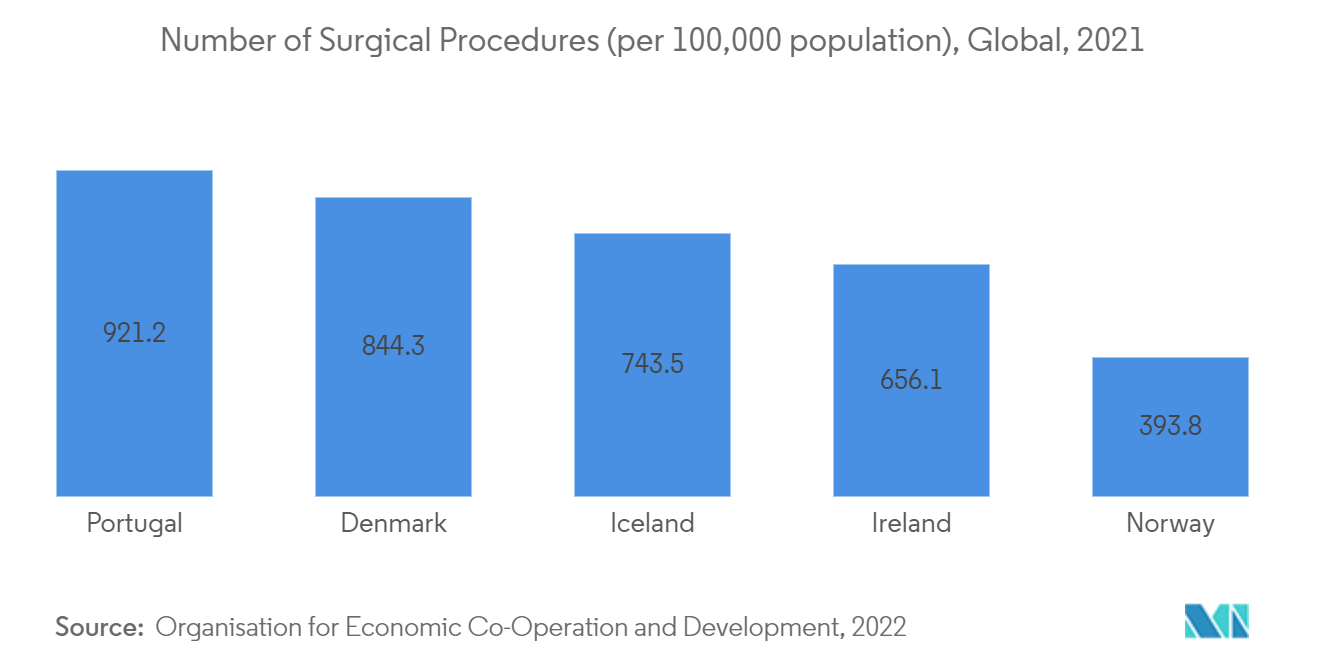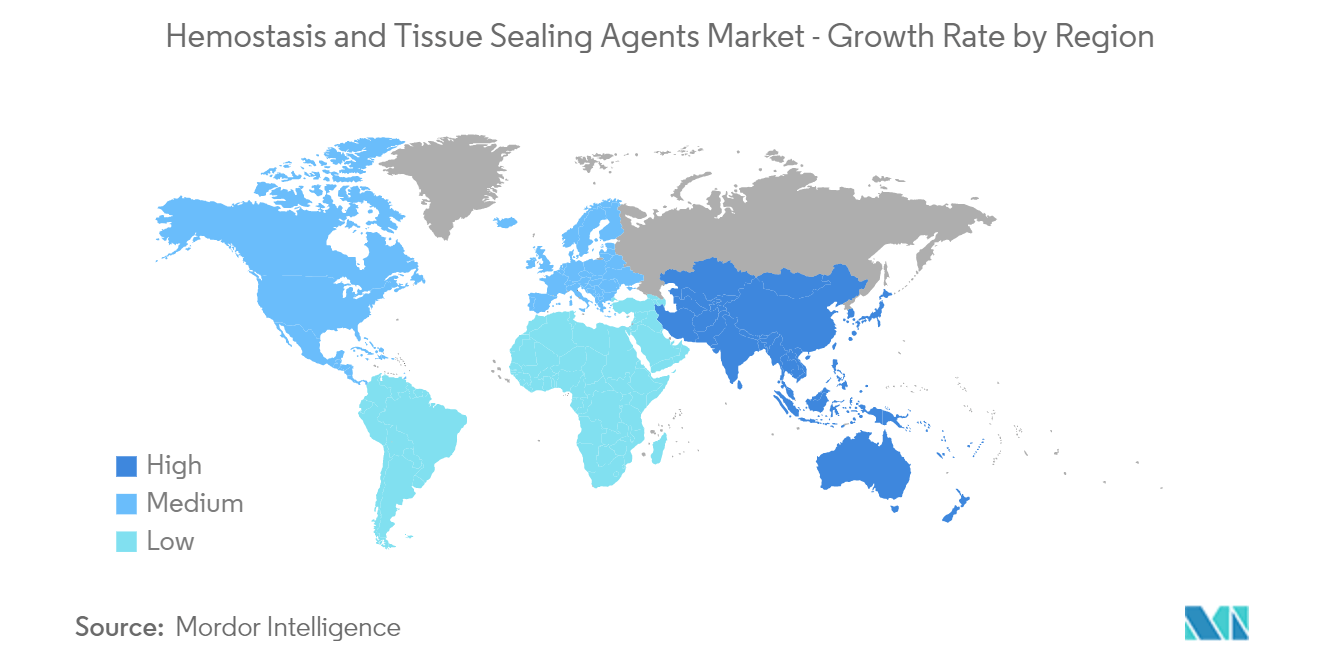Market Trends of Hemostasis and Tissue Sealing Agents Industry
This section covers the major market trends shaping the Hemostasis & Tissue Sealing Agents Market according to our research experts:
General Surgery Segment is Expected to Hold a Significant Market Share
- Hemostats consist of hemostatic agents, adhesives, and sealants that contain thrombin and play a prominent role in controlling blood loss during surgeries. The Journal of Medical Economics published a research study in April 2021, reporting that patients undergoing cardiac, vascular, noncardiac thoracic, and neuro surgeries immediately treated with active products as a first-line adjunctive hemostat may experience more effective or sustained hemostasis, resulting in a shorter hospital stay as well as lower risk of complications thereafter, thus lowering the total hospital costs.
- As per the research study published in June 2021 by the German Heart Surgery Report, a total of 92,809 operations were classified as heart surgery procedures in a conventional manner, and the number of isolated heart transplantations increased by 2% to 340. According to the British Heart Foundation's February 2021 report, about 371,000 heart procedures and operations were performed in England in 2020. Hence, the high number of heart surgeries and operations being performed every year may boost the demand for hemostat agents that control bleeding.
- In addition, increasing key strategic activities such as mergers and acquisitions and product launches by the key market players are anticipated to boost the segment's growth over the forecast period. For instance, in November 2022, Medtrade Products Ltd announced CE certification for its Uterine Hemostatic Tamponade, CELOX, which is a significant and state-of-the-art innovation that provides rapid and effective control of postpartum bleeding, a prevalent and severe complication of childbirth.
- Thus, all aforementioned factors, such as the increasing number of surgical procedures and the product launches by key market players, are expected to boost the segment over the forecast period.

North America is Expected to Dominate the Market
- North America is anticipated to dominate the hemostasis and tissue sealing agents market owing to the high clinical research and development budgets by both governments as well as public and private organizations, the presence of major manufacturers for the products, and a high number of surgical procedures.
- The region's growing geriatric population has been fueling demand for less invasive surgical treatments, which in turn is promoting expansion in the market for hemostasis tissue sealing agents. According to the February 2022 update by the US Census Bureau, there were over 55 million senior citizens living in the United States in the year 2021, making up 17.1% of the total population. According to estimates, the total number of adults aged 65 and older is projected to rise to roughly 22% of the overall US population by 2050. This generation's population has a higher prevalence of obesity and chronic conditions than previous generations, which will likely change the amount and type of care they require.
- Furthermore, a significant market exists for cutting-edge hemostasis products in North America due to the increased prevalence of cardiovascular diseases. The frequency of cardiac operations is likely to rise along with the prevalence of cardiovascular disorders in the area, which is predicted to enhance demand for hemostasis products and fuel market expansion. The growth can also be attributed to the presence of top pharmaceutical and biotechnology companies that are involved in technological developments and the presence of well-established healthcare infrastructure. For instance, in July 2021, Medcura Inc., a commercial-stage medical device company, in partnership with ASO LLC, a major United States manufacturer and supplier of first aid products, reported the launch of a high-performance, antibacterial hemostatic gel, Rapid-Seal, at a leading US drugstore chain. Thus, over the forecast period, technological advancements, a rising percentage of the geriatric population, and support from the government through reimbursement and innovation in products are expected to be the major drivers for the growth of the hemostasis and tissue sealing market.


